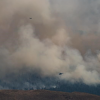A Statistics Canada report released today shows trends in self-reported spousal violence, with a positive change for the majority of Canadians.
Over 19 million people living in the Canadian provinces are married, qualify as “common law” with their partner, or are still in contact with someone they are separated or divorced from. Out of those, about 4 percent, or 760,000 people, reported some type of abuse in the 2014 General Social Survey.
The good news is, this is remarkably lower than the 7 per cent reported in 2004.
Across the provinces, rates were very close to the national average. Since 2004, most provinces have recorded significant declines in self-reported spousal violence.
The largest declines were in Manitoba, Saskatchewan, Alberta, and British Columbia.
The same number of men and women appear to be victims, and both sexes experienced the decline in numbers.
Still, women are more likely to face severe forms of abuse, with one-quarter reporting sexual assault, beatings, choking, and being threatened with a gun or knife.
Half of these sexual assault victims report being drugged or otherwise manipulated by a partner.
According to Stats Can, 70 per cent of the abuse cases they heard about were not reported to police.
There were new findings when is comes to mental health and domestic violence.
According to Stats Can, over 15 per cent of abuse victims reported suffering psychological affects consistent with post-traumatic stress disorder (PTSD). This includes nightmares, repression, feeling constantly on guard, and feeling detached from others.
Women were more likely to suffer from these after effects, especially when victimized multiple times or severely.
 The Stats Can survey showed that Aboriginal people were more than twice as likely as non-Aboriginal people to report going through spousal violence in the past five years.
The Stats Can survey showed that Aboriginal people were more than twice as likely as non-Aboriginal people to report going through spousal violence in the past five years.
Aboriginal women specifically face abuse more, with 10 per cent reporting it, compared to 3 per cent of non-Aboriginal women reporting it.
Aboriginal people more often reported having experienced abuse as children, a factor that may affect the spousal abuse number.
In 2014, 40 per cent of Aboriginal people reported being sexually or physically abused as a child (or both), compared to less than 30 per cent of non-Aboriginal people.
In the last decade, numbers of spousal abuse haven’t changed for the Aboriginal community.
While rates of abuse among the non-Aboriginal population decreased according to the survey, rates for Aboriginal people only lowered by 1 per cent in the ten years that had passed.
















